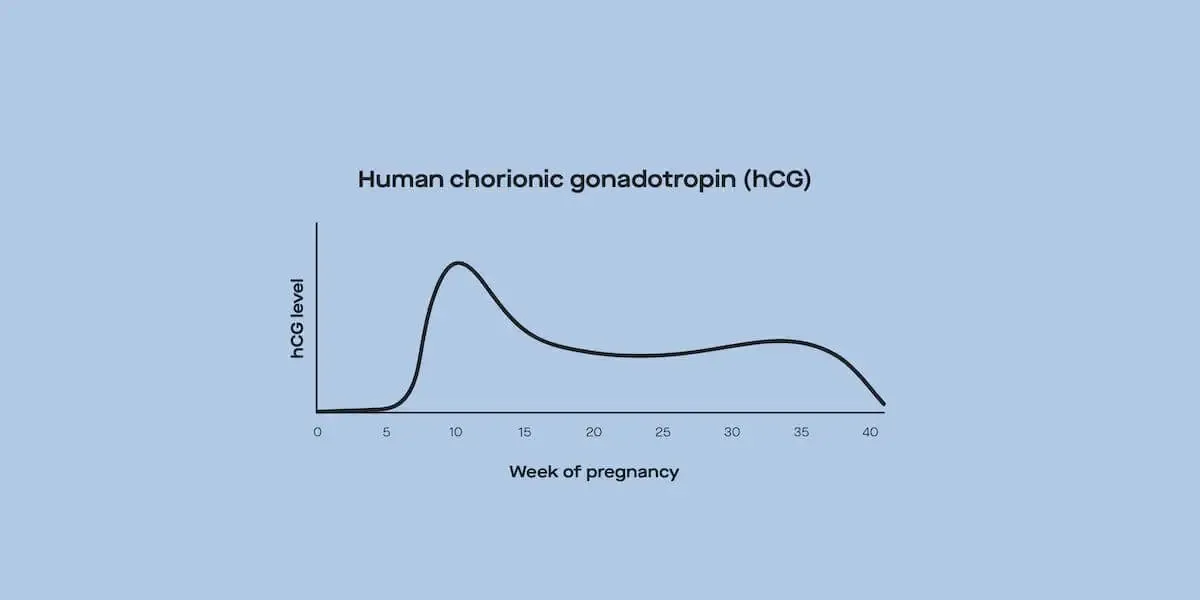Here's what we'll cover
Here's what we'll cover
Tubal ligation (or “having your tubes tied”) is a surgical procedure that prevents you from becoming pregnant through sexual intercourse. While the procedure supposed to be permanent, a tubal ligation reversal can restore your fertility. Experts call this reversal procedure a tubal anastomosis.
Most women are satisfied with their decision to undergo a permanent contraception procedure, but some women experience regret. By some estimates, up to one in five women eventually regret the decision, and 1-2% of them ultimately opt to have the procedure reversed.
While this reversal is often successful—in fact, it’s the most successful surgical reconstructive procedure for improving fertility—its success depends on a couple of factors and is not always guaranteed. Also, it’s not the only option for women who want to bear children following tubal sterilization (van Seeters, 2017).
Let’s learn a bit more about this procedure, its success rates, and its various alternatives.
What is tubal ligation surgery?
In order to understand how tubal ligation works, let’s take a step back and talk about the fallopian tubes.
Your fallopian tubes are an essential part of your reproductive anatomy. These structures allow sperm to move from your uterus to your ovaries. Once there, the sperm can fertilize a mature egg (oocyte), which is necessary for conception. The fallopian tubes also allow the fertilized egg to move into the uterus where it can gestate (Sung, 2021).
During a tubal ligation, your surgeon closes off the fallopian tubes using one of several methods. For example, your surgeon may pinch the fallopian tubes shut using silicon rubber bands, titanium clips, or some other type of tubal ligation. Your surgeon may also remove part of the fallopian tubes or block the fallopian tubes using a method called electrocoagulation, which essentially burns closed a section of tubes.
The method is determined in part by factors like your age, anatomy, and history of childbirth. But the goal in each case is to close the fallopian tubes so that the egg can’t travel from the ovaries through the fallopian tubes, and sperm cannot reach the ovaries. In other words: the egg and sperm cannot reach each other. This is considered a form of sterilization because it causes infertility (Sung, 2021).
What is a tubal ligation reversal surgery?
As we covered earlier, medical experts refer to a tubal ligation reversal as tubal “anastomosis.” The word “anastomosis” means to connect two separated parts or sections.
During tubal anastomosis—sometimes also termed tubal reanastomosis—you will be put under general anesthesia and your surgeon will remove whatever is blocking your fallopian tubes, whether it’s a titanium clip, a section of electrocoagulated tissue, or some other form of ligation. They will then rejoin the ends of the tubes so that, hopefully, both sperm and fertilized egg can move through them freely again (van Seeters, 2017).
There are several different methods a surgeon can use to accomplish this reversal. The most common is a mini laparotomy. This refers to a traditional surgery where a surgeon makes a small cut into your abdomen and performs the surgical process explained above.
Another option is a laparoscopy. These procedures are becoming more popular because they minimize tissue injury and overall recovery time. They involve making very small incisions and inserting tiny cameras and instruments into your abdomen. Instead of the “hands on” approach of a laparotomy, your surgeon will control these instruments and cameras from outside of your abdomen (Godin, 2019).
A tubal ligation reversal is an outpatient procedure, meaning—barring any complications—you get to go home after the surgery (Godin, 2019).
Tubal reversal surgery success rate
Tubal reversal surgery is often successful. The overall success rate for getting pregnant (pregnancy rate) following tubal ligation reversal ranges between 42–70%. A woman’s age, for example, plays a large role. Once a woman reaches the age of 40, the procedure’s odds of success tend to drop (van Seeters, 2017). One study showed that pregnancy rates after tubal reversal surgery among women under 30 were 73% and dropped to 46% for women 34 to 49 years (Trussell, 2003).
Some research has found that laparoscopic reversal procedures tend to have the highest pregnancy success rates, but the data is inconsistent (van Seeters, 2017). Also, if a woman has had a significant portion of her fallopian tubes removed during the ligation—something that is more common among women with fallopian tube abnormalities—reversal may have lower odds of success (Sung, 2021).
Tubal ligation reversal complications
Even if the tubal ligation reversal is successful, women who have had it are at increased risk for ectopic pregnancy. This is a pregnancy where the fertilized egg, or embryo, fails to properly migrate to the uterus. In many cases, it becomes stuck (implanted) in the fallopian tubes (Mummert, 2021).
Between 4–8% of pregnancies following tubal ligation reversal are ectopic. This is much higher than the normal rate. Ectopic pregnancy can be life-threatening if left untreated, but fortunately most cases are caught early (van Seeters, 2017).
Alternatives to tubal ligation reversal
The most common alternative to tubal ligation reversal for those wanting to bear children is in vitro fertilization (Peregrine, 2020).
During in vitro fertilization (IVF), mature eggs are collected from a woman’s ovaries and fertilized outside the body, using a donor’s or her partner’s sperm. The fertilized egg or eggs are then implanted directly in a woman’s uterus or frozen for later use (Choe, 2021). This bypasses the need for intact fallopian tubes.
Tubal ligation reversal cost
The cost of a tubal ligation reversal can vary greatly, and it’s rarely covered by insurance (meanwhile, health insurance often covers some or all of the cost of tubal ligation).
One recent cost analysis pegged tubal ligation reversal surgery at an average of roughly $9,000, while another found it could range from $1,000 to $21,000 (Messinger, 2015).
The good news is that tubal ligation reversal is possible. In many cases, it carries high odds of success. But it’s expensive, and there are circumstances that may lower its chances of working. Your healthcare provider can help you determine if the procedure is right for you.
DISCLAIMER
If you have any medical questions or concerns, please talk to your healthcare provider. The articles on Health Guide are underpinned by peer-reviewed research and information drawn from medical societies and governmental agencies. However, they are not a substitute for professional medical advice, diagnosis, or treatment.
Choe, J., Archer, J. S., & Shanks, A. L. (2021). In Vitro Fertilization. [Updated Sep 9, 2021]. In: StatPearls [Internet]. Retrieved from https://www.ncbi.nlm.nih.gov/books/NBK562266/
Godin, P. A., Syrios, K., Rege, G., Demir, S., Charitidou, E., & Wery, O. (2019). Laparoscopic Reversal of Tubal Sterilization; A Retrospective Study Over 135 Cases. Frontiers in surgery , 5 , 79. doi: 10.3389/fsurg.2018.00079. Retrieved from https://www.frontiersin.org/articles/10.3389/fsurg.2018.00079/full
Messinger, L. B., Alford, C. E., Csokmay, J. M., Henne, M. B., Mumford, S. L., Segars, J. H., et al. (2015). Cost and efficacy comparison of in vitro fertilization and tubal anastomosis for women after tubal ligation. Fertility and Sterility , 104 (1), 32–8.e4. doi: 10.1016/j.fertnstert.2015.04.019. Retrieved from https://www.ncbi.nlm.nih.gov/pmc/articles/PMC4710374/
Mummert, T., & Gnugnoli, D. M. (2021). Ectopic Pregnancy. [Updated Aug 11, 2021]. In StatPearls [Internet]. Retrieved from https://www.ncbi.nlm.nih.gov/books/NBK539860/
Peregrine, J., McGovern, P. G., Brady, P. C., Ginsburg, E. S., & Schlaff, W. (2020). Restoring fertility in women aged 40 years and older after tubal ligation: tubal anastomosis versus in vitro fertilization. Fertility and Sterility , 113 (4), 735–742. doi: 10.1016/j.fertnstert.2020.01.041. Retrieved from https://www.fertstert.org/article/S0015-0282(20)30087-X/fulltext#relatedArticles
Sung, S. & Abramovitz, A. (2021). Tubal Ligation. [Updated Jul 31, 2021]. In StatPearls [Internet]. Retrieved from https://www.ncbi.nlm.nih.gov/books/NBK549873/
Trussell, J., Guilbert, E., & Hedley, A. (2003). Sterilization failure, sterilization reversal, and pregnancy after sterilization reversal in Quebec. Obstetrics and Gynecology . Doi: 10.1016/s0029-7844(02)03156-3. Retrieved from https://pubmed.ncbi.nlm.nih.gov/12681870/
van Seeters, J., Chua, S. J., Mol, B., & Koks, C. (2017). Tubal anastomosis after previous sterilization: a systematic review. Human Reproduction Update , 23 (3), 358–370. doi: 10.1093/humupd/dmx003. Retrieved from https://academic.oup.com/humupd/article/23/3/358/3044150










